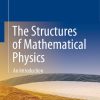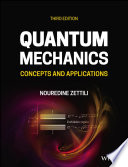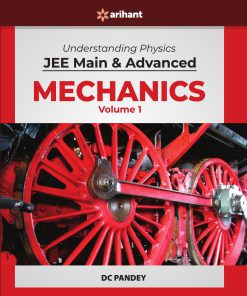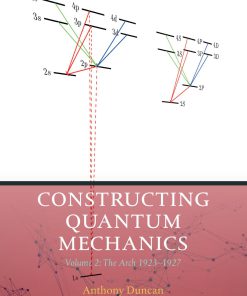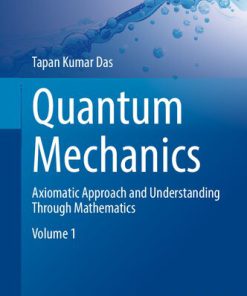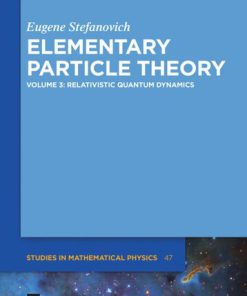Elementary Particle Theory Volume 1 Quantum Mechanics 1st Edition by Eugene Stefanovich ISBN 9783110491036 3110491036
$50.00 Original price was: $50.00.$25.00Current price is: $25.00.
Elementary Particle Theory Volume 1 Quantum Mechanics 1st Edition by Eugene Stefanovich – Ebook PDF Instant Download/Delivery: 9783110491036 ,3110491036
Full download Elementary Particle Theory Volume 1 Quantum Mechanics 1st Edition after payment
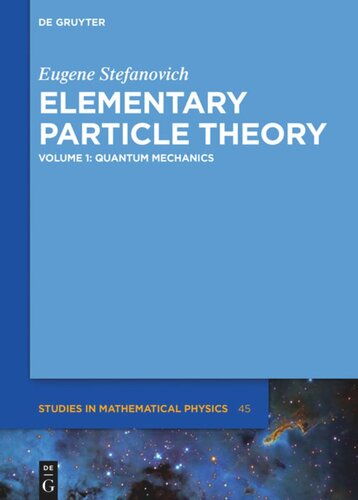
Product details:
ISBN 10: 3110491036
ISBN 13: 9783110491036
Author: Eugene Stefanovich
Elementary Particle Theory Volume 1 Quantum Mechanics 1st Edition Table of contents:
1 Quantum logic
1.1 Why do we need quantum mechanics?
1.1.1 Corpuscular theory of light
1.1.2 Wave theory of light
1.1.3 Light of low intensity and other experiments
1.2 Classical logic
1.2.1 Phase space of one classical particle
1.2.2 Propositions in phase space
1.2.3 Operations with propositions
1.2.4 Axioms of logic
1.2.5 Phase space from axioms of classical logic
1.2.6 Classical observables
1.3 Measurements and probabilities
1.3.1 Ensembles and measurements
1.3.2 States as probability measures
1.3.3 Probability distributions and statistical mechanics
1.4 Logic of quantum mechanics
1.4.1 Partial determinism of quantum mechanics
1.4.2 Axioms of quantum logic from probability measures
1.4.3 Compatibility of propositions
1.4.4 Logic of quantum mechanics
1.4.5 Quantum logic and Hilbert space
1.4.6 Piron’s theorem
1.4.7 Should we abandon classical logic?
1.5 Physics in Hilbert space
1.5.1 Quantum observables
1.5.2 States
1.5.3 Complete sets of commuting observables
1.5.4 Wave functions
1.5.5 Expectation values
1.5.6 Basic rules of classical and quantum mechanics
1.6 Interpretations of quantum mechanics
1.6.1 Quantum nonpredictability
1.6.2 Collapse of wave function
1.6.3 Collapse of classical probability distribution
1.6.4 Hidden variables
1.6.5 Quantum-logical interpretation
1.6.6 Quantum randomness and limits of knowledge
2 Poincaré group
2.1 Inertial observers
2.1.1 Principle of relativity
2.1.2 Inertial transformations
2.2 Galilei group
2.2.1 Composition law in Galilei group
2.2.2 Lie algebra of Galilei group
2.2.3 Rotations applied to generators
2.2.4 Space inversion
2.3 Poincaré group
2.3.1 Conditions on Poincaré generators
2.3.2 Lie algebra of Poincaré group
2.3.3 Boosts of translation generators
3 Quantum mechanics and relativity
3.1 Inertial transformations in quantum mechanics
3.1.1 Wigner’s theorem
3.1.2 Inertial transformations of states
3.1.3 Heisenberg and Schrödinger pictures
3.2 Unitary representations of Poincaré group
3.2.1 Projective representations of groups
3.2.2 Generators of projective representation
3.2.3 Commutators of projective generators
3.2.4 Cancellation of central charges
3.2.5 Single-valued and double-valued representations
3.2.6 Fundamental statement of relativistic quantum theory
3.2.7 Time evolution in moving frame
4 Observables
4.1 Basic observables
4.1.1 Energy, momentum and angular momentum
4.1.2 Operator of velocity
4.2 Casimir operators
4.2.1 4-Vectors
4.2.2 Mass operator
4.2.3 Pauli–Lubanski 4-vector
4.3 Operators of spin and position
4.3.1 Physical requirements
4.3.2 Spin operator
4.3.3 Position operator
4.3.4 Commutators of position
4.3.5 Alternative set of basic operators
4.3.6 Canonical order of operators
4.3.7 Power of operator
4.3.8 Uniqueness of spin operator
4.3.9 Uniqueness of position operator
4.3.10 Boost of position
5 Elementary particles
5.1 Massive particles
5.1.1 One-particle Hilbert space
5.1.2 Action of rotation subgroup in H0
5.1.3 Momentum–spin basis
5.1.4 Nonuniqueness of momentum–spin basis
5.1.5 Action of translations and rotations on basis vectors
5.1.6 Action of boosts on momentum eigenvectors
5.1.7 Action of boosts on spin components
5.1.8 Wigner angle
5.1.9 Irreducibility of representation Ug
5.1.10 Method of induced representations
5.2 Momentum representation
5.2.1 Resolution of identity
5.2.2 Boost transformation
5.2.3 Wave function in momentum representation
5.3 Position representation
5.3.1 Basis of localized functions
5.3.2 Operators of observables in position representation
5.3.3 Inertial transformations of observables and states
5.3.4 Time translations of observables and states
5.4 Massless particles
5.4.1 Spectra of momentum, energy and velocity
5.4.2 Representations of small groups
5.4.3 Basis in Hilbert space of massless particle
5.4.4 Massless representations of Poincaré group
5.4.5 Doppler effect and aberration
6 Interaction
6.1 Hilbert space of multiparticle system
6.1.1 Tensor product theorem
6.1.2 Particle observables in multiparticle systems
6.1.3 Statistics
6.2 Relativistic Hamiltonian dynamics
6.2.1 Noninteracting representation of Poincaré group
6.2.2 Dirac’s forms of dynamics
6.2.3 Total observables in multiparticle systems
6.3 Instant form of dynamics
6.3.1 General instant-form interaction
6.3.2 Bakamjian–Thomas construction
6.3.3 Example: two-particle system
6.3.4 Other variants of instant-form dynamics
6.4 Cluster separability
6.4.1 Definition of cluster separability
6.4.2 Examples of interaction potentials
6.4.3 Smooth potentials
6.4.4 Nonseparability of Bakamjian–Thomas dynamics
6.4.5 Cluster-separable three-particle interaction
6.4.6 Relativistic addition of interactions
6.5 Bound states and time evolution
6.5.1 Spectra of mass and energy operators
6.5.2 Perturbation theory
6.5.3 Once again about the Doppler effect
6.5.4 Time evolution
6.6 Classical Hamiltonian dynamics
6.6.1 Quasiclassical states
6.6.2 Heisenberg uncertainty relation
6.6.3 Spreading of quasiclassical wave packets
6.6.4 Phase space
6.6.5 Poisson bracket
6.6.6 Time evolution of wave packets
6.6.7 Once again about experiments with two holes
7 Scattering
7.1 Scattering operators
7.1.1 Physical meaning of S-operator
7.1.2 S-operator in perturbation theory
7.1.3 Convenient notation for t-integrals
7.1.4 Adiabatic switching of interaction
7.1.5 T-matrix
7.1.6 S-matrix and bound states
7.2 Scattering equivalence
7.2.1 Equivalent Hamiltonians
7.2.2 Bakamjian construction of point-form dynamics
7.2.3 Unitary link between point and instant forms of dynamics
7.2.4 Scattering equivalence of forms of dynamics
A Delta function
B Orthocomplemented lattices
B.1 Derivation of quantum axioms
B.2 Some lemmas and theorems
C Groups and vector spaces
C.1 Groups
C.2 Vector spaces
D Group of rotations
D.1 Basics of 3D space
D.2 Scalars and vectors
D.3 Orthogonal matrices
D.4 Invariant tensors
D.5 Vector parametrization of rotations
D.6 Group properties of rotations
D.7 Generators of rotations
E Lie groups and Lie algebras
E.1 Lie groups
E.2 Lie algebras
E.3 One-parameter subgroups of Lie groups
E.4 Baker–Campbell–Hausdorff formula
F Hilbert space
F.1 Internal product
F.2 Orthonormal bases
F.3 Bra and ket vectors
F.4 Tensor product of Hilbert spaces
G Operators
G.1 Linear operators
G.2 Matrices and operators
G.3 Functions of operators
G.4 Hermitian and unitary operators
G.5 Linear operators in different orthonormal bases
G.6 Diagonalization of Hermitian and unitary matrices
H Subspaces and projections
H.1 Projections
H.2 Commuting operators
I Representations of groups and algebras
I.1 Unitary representations of groups
I.2 Stone theorem
I.3 Heisenberg algebra
I.4 Double-valued representations of rotation group
I.5 Unitary irreducible representations of rotation group
J Pseudo-orthogonal representation of Lorentz group
J.1 Minkowski space–time
J.2 General properties of representation
J.3 Matrices of pseudo-orthogonal representation
J.4 Representation of Lorentz Lie algebra
Bibliography
Index
People also search for Elementary Particle Theory Volume 1 Quantum Mechanics 1st Edition:
elementary particle theory
elementary particle physics
elementary particle masses
elementary particles
an elementary particle with fractional charge
Tags: Eugene Stefanovich, Elementary Particle, Theory, Quantum Mechanics
You may also like…
Physics - Quantum Physics
Mathematics
The General Theory of Particle Mechanics A Special Course 1st Edition Alexander P. Yefremov
Physics - Theoretical Physics
Physics - Quantum Mechanics
Constructing Quantum Mechanics, Volume Two. The Arch: 1903‒1927 1st Edition Anthony Duncan
Physics - Quantum Mechanics
Physics - Quantum Mechanics
Mastering Quantum Mechanics Essentials Theory and Applications Barton Zwiebach
Mathematics - Mathematical Physics
Elementary Particle Theory Volume 2 Quantum Electrodynamics 1st Edition Eugene Stefanovich
Mathematics - Mathematical Physics
Elementary Particle Theory Volume 3 Relativistic Quantum Dynamics 1st Edition Eugene Stefanovich
Uncategorized
Quantum Mechanics: Non-Relativistic and Relativistic Theory 1st Edition Lukong Cornelius. Fai


